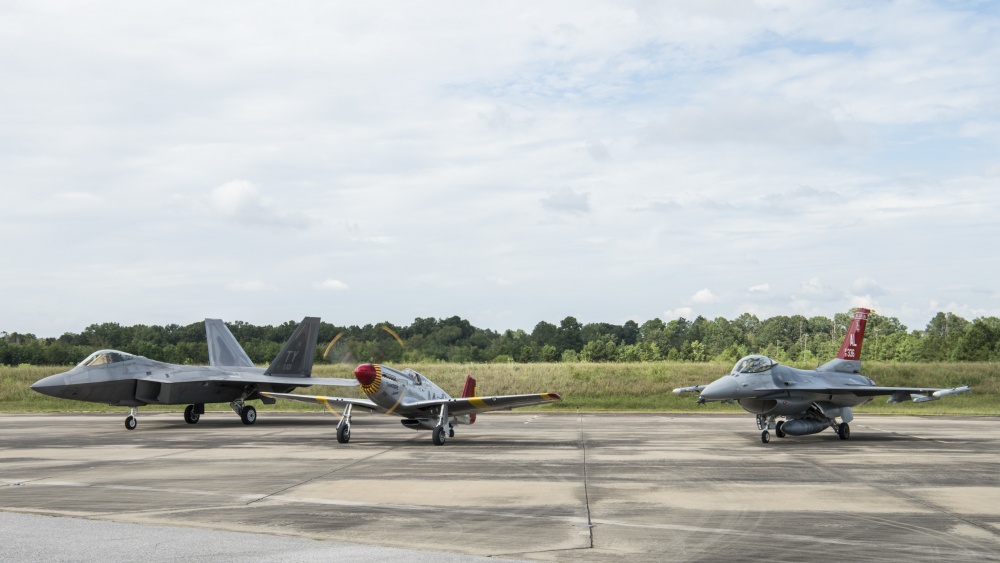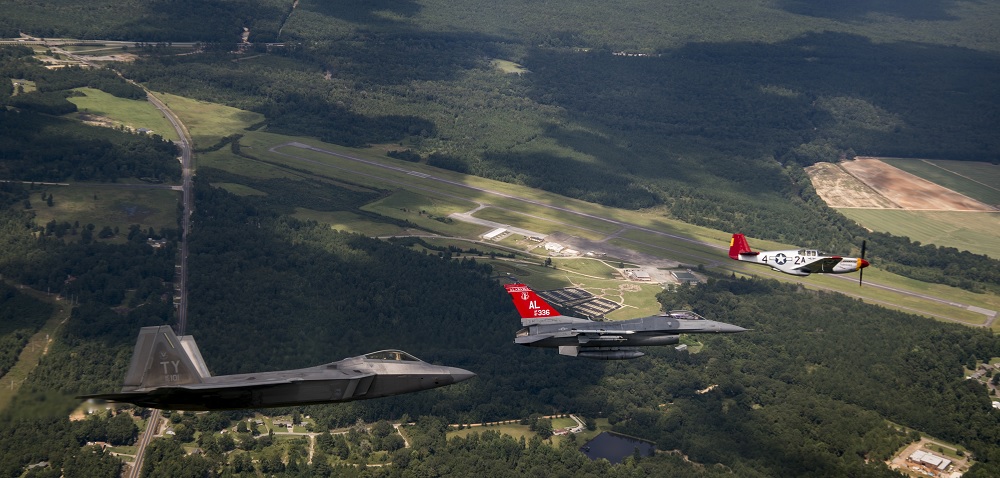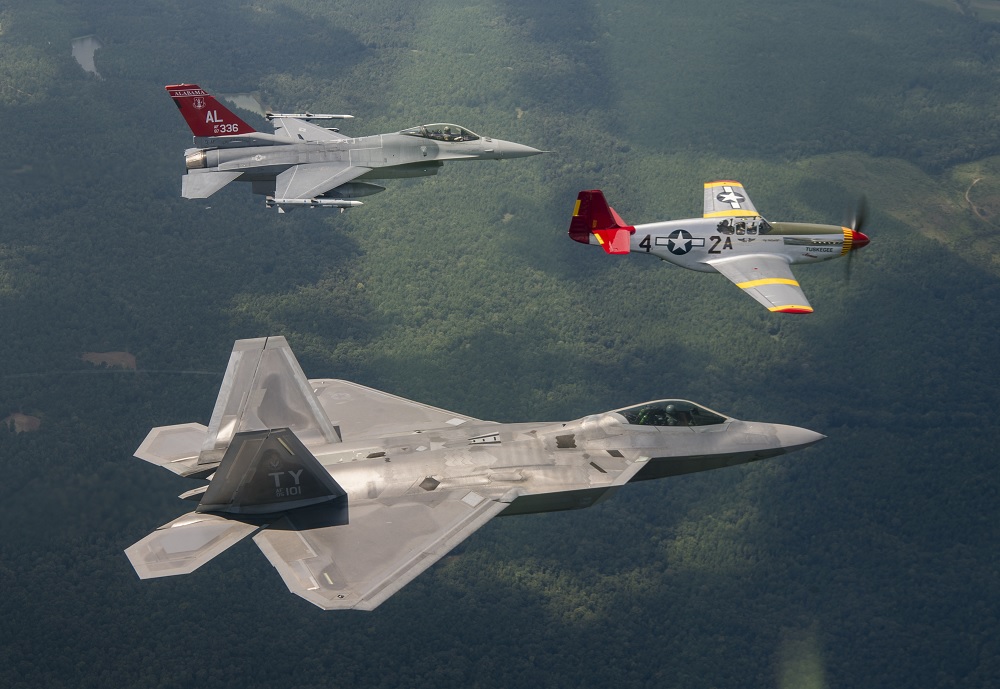Together, Peace, Lopez, and Lang took to the air. Once the fighter pilots adjusted to the P-51’s rather sluggish pace, the flying was smooth
On Thursday, September 7, 2018, keen-eyed spectators inspecting the skies may have spotted a special tribute to the history, present, and future of the Tuskegee Airmen legacy that was created in Alabama more than 77 years ago.
The members of the 100th Fighter Squadron Red Tails at Dannelly Field are aware of their past and the importance of the red paint on the tails of their jets, as stated by Staff Sgt. Jared Rand of the 187th Fighter Wing Public Affairs in the article Tuskegee Airmen Legacy Soars Over Alabama. It pays tribute to the original Red Tails, the heroic World War II Tuskegee Airmen of the 332nd Fighter Group (and 100th Fighter Squadron). These Airmen, who were among the first African-Americans to serve in the military, decorated the tails of their P-51 Mustang fighter planes in order to distinguish friendly from hostile aircraft amid the chaos of combat.
On September 8, the Red Tails Over Montgomery Air Show was scheduled, and when U.S. Air Force (USAF) Maj. Rich “Sheriff” Peace, a fighter pilot with the Red Tails, learned that a Red Tail P-51 Mustang and an F-22 Raptor from the 301st Fighter Squadron would be flying in for the show, and an idea started to take shape. The Tuskegee Airmen were also the ancestors of the 301st.

“We realized we had an opportunity to do something historic”, Peace said later. “That was to take three Tuskegee aircraft, with three black pilots, and do a flight over Tuskegee.”
A compelling image to motivate the following generation of Airmen would be on full display, showcasing the past, present, and future of the Red Tail legacy.

A different formation flight was authorized following coordination, phone calls, and assistance from leadership all the way up to the MAJCOM level. Over Moton Field in Tuskegee, where the Tuskegee Airmen trained, and Dannelly Field, where the 100th currently flies, the three aircraft would fly in formation. F-16 would be piloted by Peace. The P-51 would be flown by Commemorative Air Force pilot Brad Lang. And the F-22 would be flown by USAF Maj. Paul “Loco” Lopez, the team leader and pilot for the ACC F-22 Demonstration Team.
“We all stand on the shoulders of giants,” Lopez said before the flight. “If you look around here in Montgomery, you can see how the Air Force values preserving our legacy and honoring our heritage. For me, it’s very humbling to know that a lot of people went through great sacrifices so we can all be here.”
Lang, Lopez, and Peace all went to the air. Once the fighter pilots got used to the P-51’s rather slow speed, the flight was smooth.

“I had seen (the P-51) in air shows, but being right next to it, it’s just so beautiful and majestic,” Peace said after the flight. “Seeing it flying over Moton Field was pretty awesome.”
The jets made a variety of formations and photo opportunities before returning to Montgomery. Although the flight was over, the impact it made on the pilots and probably others who heard their narrative will be felt for a long time.

“The legacy flight was to honor the memory of the Tuskegee Airmen and to bring visibility and light to the sacrifices they made then, what we’re doing now, and how they paved the way forward to the future,” Peace remarked afterward. “To see what their work and sacrifice led to today was a pretty amazing thing. I was honored and proud to be part of it.”
Photo by Staff Sgt. Clayton Cupit / U.S. Air Force

